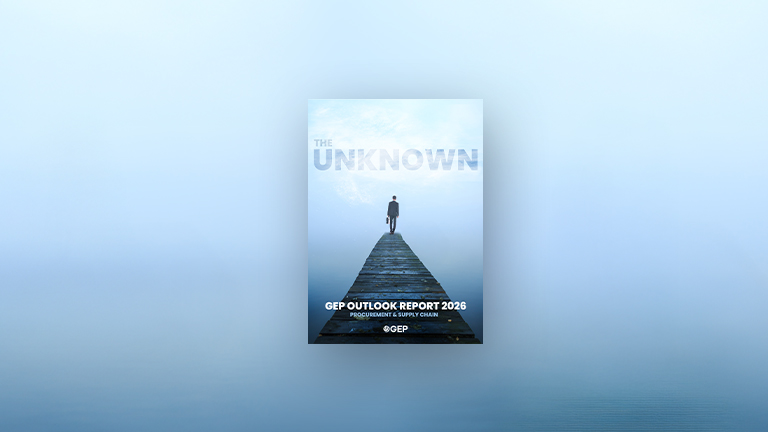
Why Procurement Transformation Should Begin with Digital POs
- Digital purchase orders streamline approvals and boost efficiency, cutting out delays and manual steps that slow procurement down.
- Automation and AI reduce errors and enforce compliance, helping teams avoid costly mistakes and rogue spending.
- Modern PO software provides real-time visibility, making it easier to track status, manage suppliers, and make smarter decisions.
August 13, 2025 | Procurement Software 6 minutes read
Let’s face it. Purchase orders aren’t exactly the most exciting part of procurement. But they’re critical. And if your team is still pushing paper, chasing approvals by email, or manually updating spreadsheets, it is time for a change.
Digital purchase orders aren’t just about ditching paper. They’re about making your day-to-day smoother, faster, and more accurate. With the right system, the entire procurement process starts to feel less like a slog and more like a well-oiled machine.
What is a Digital Purchase Order?
Think of a digital purchase order (PO) as the modern upgrade to old-school, paper-based ordering systems. Instead of printing, signing, and scanning forms, everything happens online—faster, more secure, and far easier to track.
A digital PO is simply a purchase order created, sent, and managed electronically—usually through a cloud-based procurement platform or ERP system. It contains the same essential details as a traditional PO (like supplier info, item descriptions, prices, and payment terms), but it's processed in a few clicks.
The Speed You Didn’t Know You Were Missing
In a traditional setup, getting a PO approved can take a lot of time. You send an email. Then a reminder. Then a reminder to your reminder. Meanwhile, the project waits.
But with a digital PO system, approvals move through automatically. Budget checks are done in real time. Managers can approve from their phones. No more bottlenecks. Just faster decisions and fewer delays.
That speed doesn’t just help procurement—it keeps the whole business moving.
Automation = Fewer Mistakes, Happier Teams
Let’s be honest: manual data entry is a breeding ground for errors. A missed zero, the wrong SKU, an outdated price—it happens more often than we’d like.
With an automated purchase order system, a lot of those risks vanish. The system pulls accurate data directly from supplier catalogs or contracts. That means fewer invoice mismatches, fewer supplier disputes, and less back-and-forth for your finance team.
Key Features of Digital Purchase Order Systems
What Makes Digital Purchase Order Systems So Useful?
Let’s be honest. Managing purchase orders used to mean chasing paperwork, digging through emails, or waiting on someone to approve something. With a digital system, the process becomes smoother, faster, and much easier to stay on top of. Here’s how it actually works:
Purchase Order Management
Everything is kept in one place. No more juggling spreadsheets or searching old emails. You can create, find, and track every purchase order through a single dashboard. It’s simple, clear, and always up to date.
Real-Time Tracking
You no longer have to ask where an order is. As soon as something gets approved, shipped, or received, you’ll see it updated instantly. That means fewer delays and a better sense of what’s happening at every stage.
Customizable Approval Workflows
Every team works a little differently, so the approval process needs to match. You can set it up to fit your rules. Maybe smaller orders get auto-approved, while bigger ones go through a manager. Once it’s set, the system handles it for you.
Reporting Tools
Building reports by hand takes time. With digital tools, the insights come to you. You can check how much you’re spending, where it’s going, and who’s approving what. Everything is filterable and easy to export when you need it.
Mobile Access
You don’t have to be at your desk to keep things moving. Whether you’re on-site or travelling, you can check orders, approve requests, or pull up reports from your phone. It’s built for how people actually work today.
Goodbye Maverick Spend (And the Headaches That Come With It)
Every procurement team deals with off-contract spending. It starts small—someone just needs to “order this one thing real quick”—and suddenly, it’s snowballed.
Digital purchase orders help lock things down. Approvals are built in. Rules are clear. Only preferred suppliers are used, and budget limits are enforced automatically.
Bonus: everything’s tracked. So, when audit time rolls around, you’re not scrambling. The data’s already there, clean and accessible.
Real-Time Visibility = Less Guessing
Where’s that PO? Did it get approved? Was it sent to the supplier?
If you’re relying on email chains and shared drives, tracking down answers takes time you don’t have.
With purchase order software, everything’s in one place. You can check the status of an order, see what’s pending, and even confirm if a shipment’s on the way. That kind of visibility helps you spot potential issues before they become full-blown problems.
Smart Tech That Actually Helps
Here’s where things get interesting: some digital procurement platforms now include AI. Not the buzzword kind—actual helpful features.
AI can:
- Flag unusual purchases or potential fraud
- Suggest better suppliers based on past performance
- Spot delays before they happen
- Auto-match invoices to orders and goods receipts
In other words, it’s not just automating, it’s optimizing. And it's already in use by top-tier procurement teams at global enterprises.
Saving Time, Money, and the Planet
There’s a cost to doing things manually. Paper, printing, filing cabinets, not to mention the hours lost to double-checking data or chasing down approvals.
Digital POs cut all that. Less paper, fewer errors, and faster payments. That adds up to real savings—and it supports your sustainability goals at the same time.
Navigating Tariffs and Policy Shifts for Transmission Distribution Equipment
Gain best practices to tackle challenges paused by policy shifts and tariffs on energy equipment
What to Look For in a Digital PO Solution
Not all systems are built the same. If you’re exploring purchase order automation, make sure your platform can:
- Connect easily with your finance and ERP systems
- Support mobile approvals
- Handle custom workflows and business rules
- Offer built-in analytics and reporting
- Scale with your team’s needs
Some solutions even bundle PO automation with sourcing, supplier management, and contract tracking in one platform—ideal for companies ready to modernize their full procurement stack. If your team is working with a system like that, you’re likely seeing the benefits already.
Ready to Make the Shift?
If the idea of going digital feels overwhelming, start small. Map out your current PO process. Where are the hold-ups? Where do errors occur? Talk to your team. What would make their jobs easier?
Once you know the pain points, it’s easier to find a solution that fits—and get buy-in from the people who’ll actually be using it.
The Digital PO Advantage
At the end of the day, digital purchase orders aren’t just about technology. They’re about giving your team the tools to work better.
They speed up approvals. Reduce errors. Rein in rogue spending. Improve visibility. And when you layer in smart automation and AI? You’re not just catching up—you’re moving ahead.
So, if your purchase order process still feels stuck in the past, now’s a great time to rethink it. Because the future of procurement? It’s already here.
Frequently Asked Questions
What should I look for when choosing a digital PO solution?
Start with ease of use. If it’s too complicated, people won’t use it. Look for a clean interface, simple workflows, and good support. Then check how well it fits your current processes. Can you customize approval chains? Will it work with the way your teams buy things?
It’s also worth asking about scalability. A good solution should grow with your business. And finally, make sure it offers real-time tracking, strong reporting tools, and solid security features. If it checks all those boxes, you’re on the right track.
What impact do digital purchase orders have on audit readiness?
They make audits much easier. With everything logged digitally, you have a clear trail of what was ordered, when it was approved, and who signed off. There’s no scrambling for paperwork or emails.
Digital POs also help enforce policy compliance. When approvals are automated and tracked, it’s much harder for anything to slip through the cracks. So when auditors ask for documentation, it’s already in the system and ready to go.
Can digital purchase orders integrate with existing ERP systems?
Yes, most modern digital PO solutions are built to integrate easily with ERP systems like SAP, Oracle, or NetSuite. Integration is a big plus because it means purchase data flows directly into your existing finance, procurement, or inventory modules.
This cuts down on manual data entry and helps keep everything aligned across departments. Just be sure to confirm that the integration is pre-built or easily configurable with the tools you already use.
How do digital POs support sustainability goals?
They reduce paper usage, plain and simple. By moving the process online, you eliminate printing, scanning, and physical storage. But it goes beyond that.
Digital systems also give you better visibility into supplier performance and product choices. You can track things like preferred vendors with sustainable practices or set up workflows that encourage eco-friendly purchasing decisions. Over time, that data helps your business make greener choices more consistently.



